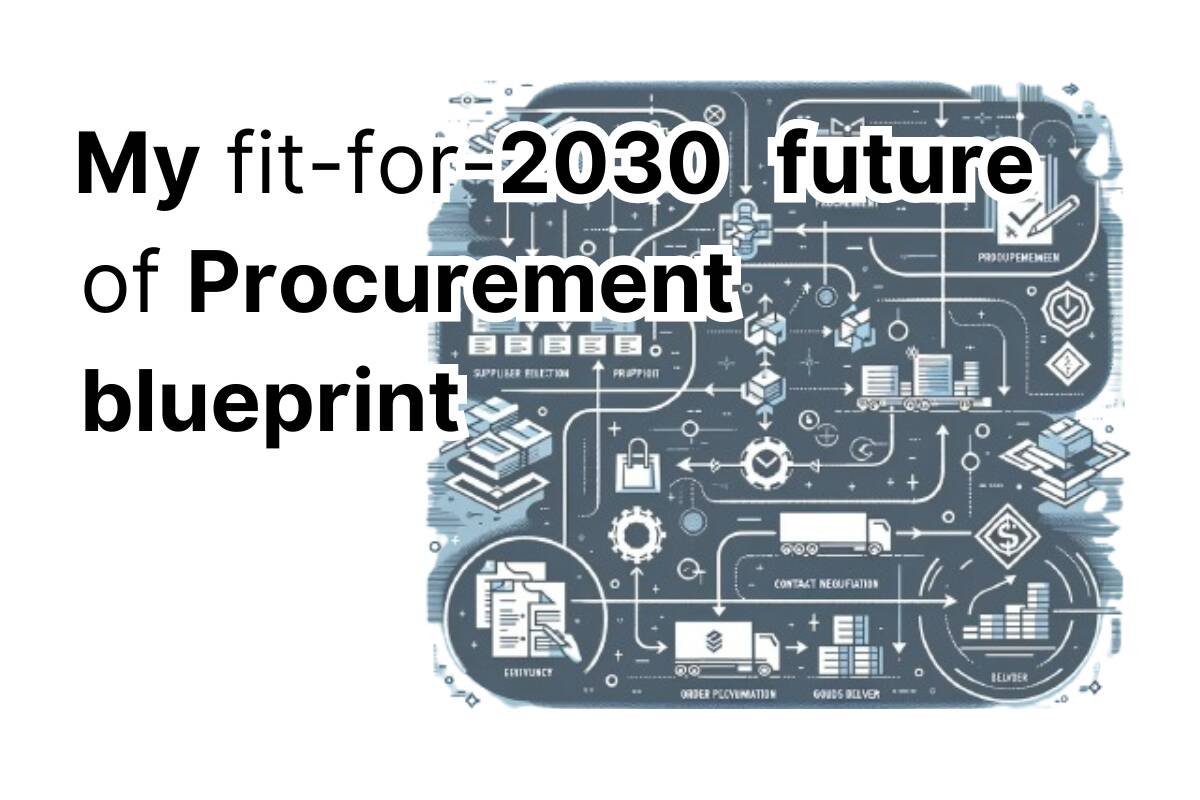While companies obsess over squeezing the last cent out of their direct spend, often indirect services procurement bears the lowest hanging fruit. This is especially the case in decentralised teams and organisations where procurement maturity is lacking.
We’re going to take a look at the consequences of poor procurement practices and lax internal controls. This, as we’ll see, can uncover a lot of cash left on the table and a lot of comfortable supplier relationships that need to be challenged.
But first we need to understand why this is the case.
How is services procurement different from goods procurement?
Procurement of services is fundamentally different to procurement of goods. Whereas goods are tangible, services procurement often isn’t.
Materials typically have some kind of specification behind them. Component parts and spare parts are often identified by master data. In its most basic form, this usually contains a manufacturer name and item code, a drawing or a part number.
Why is the indirect services procurement process more vulnerable?
Some services are repeatable and predictable. If an office cleaning company performs their service three times per week, to the same specification, then this is easy to monitor and measure.
However, indirect procurement categories which predominantly consist of services are less predictable and more difficult to quantify. The service being performed or supplied is often different with each requirement.
Take electrical contractors, for example. Or public relations agencies. Or marketing services required by a brand manager. Perhaps consultancy to support sustainability goals.
It’s highly unlikely that any two purchase orders for each of these services will be the exact same. Whereas for raw materials and purchased parts, procurement teams will typically just order whatever they did the last time.
What happens if you don’t have a robust procedure and clear guidelines around best practice for these types of services procurement? Well, then it’s easy for savvy suppliers to exploit gaps in the procure-to-pay (P2P) and source-to-contract (S2C) process.
This article highlights 9 key warning indicators that your indirect services procurement process may have some vulnerabilities.
1. POs with no contracts or negotiated terms in place
Any spend made where no contracted terms or authorised price lists exist is risky and open to exploitation by the supplier. They can effectively increase or adjust prices with each subsequent purchase order.
If there are no standard costs, for example an hourly rate or call-out charge, then how are you going to audit their invoices? Money is seemingly being spent completely blind to any systematic checks.
At the very least, you need to have some kind of frame agreement or contract to work against, if it’s a supplier you are frequently doing business with.
2. Contracts are mostly on vendors’ templates
Indirect goods and services procurement are littered with categories where contracts are concluded based on the supplier’s template. This often happens with no procurement or legal review of the terms being accepted.
A proliferation of contracts on the vendor’s contract template is a classic warning sign.
It points towards internal controls from a procurement and legal perspective being immature or non-existent. There can be a number of reasons for this, chiefly lack of procurement mandate to be involved i.e. a low percentage of total spend under management.
3. Contract terms are heavily in the supplier’s favour
This one usually happens if a stakeholder who is too cosy with the supplier has negotiated the contract or terms, rather than an experienced procurement professional.
Similar to point 2, this typically happens for indirect services spend where procurement does not have a mandate. It also occurs in decentralised organisations, where local procurement team members whose roles are purely tactical are de-facto in charge of negotiating contracts.
4. Legacy indirect services vendors who’ve never been benchmarked
There are plenty of indirect procurement examples where the supplier has been in place before procurement was given the mandate to manage the spend.
It’s more common across services spend, and often happens where suppliers have been present for a very long time, unchallenged. Usually, internal business partners who use the vendor are close to them. This can result in resistance to competitive tenders or switching suppliers.
If you come across these, it’s an immediate warning sign that costs, terms and service are probably not well-optimised.
5. Nobody regularly auditing invoices of high spend suppliers
While responsibility for invoice fraud typically sits with the CFO, indirect procurement can often be a good detective.
As procurement professionals, we’re good at understanding and questioning cost. We should therefore be concerned if invoices of key indirect services suppliers are not regularly being checked and audited.
Two examples where invoice fraud is both common – and easy to get through the system- are labour and freight costs. Both proliferate on indirect services spend.
Labour
If no unit of measure, overtime policy or clear scope of work is present, the supplier can pretty much invoice whatever they wish. No-one will know any better, especially if the invoice approver is cosy with the vendor.
Plus, if there are no timesheets or recorded evidence of how long a contractor has been on site for, how are you going to verify what’s on the supplier’s invoice? (Spoiler, you’re not – and they’re quite possibly taking advantage of that).
Transportation
For freight invoices, often there are no agreed rates per transport lane, no evidence of the size of shipment, route taken, details of the consignment, etc.
It’s easy for rogue invoices to slip through because so often, freight costs don’t get properly checked. Unlike materials and more tangible services with set prices and conditions, freight forwarders and courier services often do not have agreed rates in place. In addition, pretty much anyone within an organisation can theoretically order something, without clarity on who pays for the shipping and which forwarding or courier company will be used.
Investing in some specialist freight procurement software can be a great opportunity to combat this.
6. Vague descriptions on POs, with no itemisation
The free text purchase order is an easy breeding ground for invoice fraud or overcharging too. A free text PO is when an order is raised based on the description of the requisitioner.
If this person writes a vague description (wilfully or not), then this is open to potential abuse.
- Classic examples:
- “Parts for line maintenance” – which part numbers? What is the price for each of them? Do these part numbers exist in your company’s material master data to check the last paid price?
- “Installation costs” – what is being installed? How many hours of labour? Which technicians? The apprentice or a senior engineer? Is overtime billable?
- “Emergency transport” – from where to where? What is being transported? How much does it weigh, or what is the volume?
- “Audit fees” – how many people? How many hours? What type of work is being performed?
- “According to quote ABC123” – my absolute favourite. Nobody but the supplier and the requisitioner has the slightest clue what this quote is for.
All of these examples are completely useless in terms of PO descriptions. It affects procurement’s ability to understand their spend. Furthermore, it also leaves the door open to invoice fraud or overcharging because they are very difficult to audit.
7. After-the-fact Purchase Orders
This one needs no introduction.
Someone commits to ordering something, usually by phone or email. The requisition-to-PO process is not followed. It only becomes visible to procurement and finance when the invoice lands in Accounts Payable’s inbox.
An all-too-common occurrence, especially for ad-hoc, one-time spend. Often, it’s spend with vendors who are not in the system and have not been approved by indirect procurement teams. Again, it’s a sign of either poor internal controls, unstructured spend data, lack of policy awareness, lack of procurement mandate, or a low percentage of spend under management.
8. Invoice approver is unaware of the contractual conditions with the supplier
Typically, this happens when Procurement has negotiated the T&Cs or the Contract with a key, strategic supplier.
But the budget holder who is requisitioning the service, for example, Maintenance, IT, HR or Legal, is not aware of the agreed terms.
This is common in siloed and decentralised organisations. When the invoice goes to the budget holder who doesn’t understand or isn’t aware of the contract terms, then the buyer / supplier relationship is open to abuse and overcharging.
Another slant on this one is in cases where there is a preferred supplier contracted by corporate procurement. However, local teams are either unaware, or not aligned with the choice of vendor and do their own thing.
9. Duplicate vendors with different payment conditions
The classic problem of a company which has grown through acquisition.
This is usually caused by not having one single Indirect Category Manager responsible for managing the overall supplier relationship. It can, however, also occur if your organisation is running multiple ERP systems.
If there is no single source of truth for vendor master data, then it’s easy to have the exact same vendor duplicated, with different payment terms. An easy solution to this, of course, is investing in vendor master data management software to reduce the chances of this occurring.


